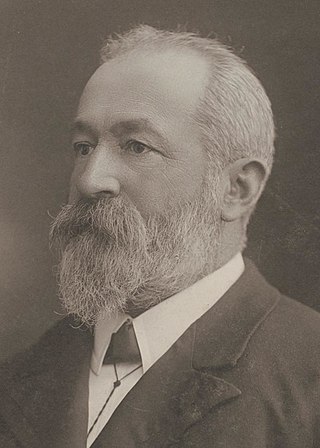The Progressive Party of Canada, formally the National Progressive Party, was a federal-level political party in Canada in the 1920s until 1930. It was linked with the provincial United Farmers parties in several provinces, and it spawned the Progressive Party of Saskatchewan, and the Progressive Party of Manitoba, which formed the government of that province. The Progressive Party was part of the farmers' political movement that included federal and provincial Progressive and United Farmers' parties.

The 1924 United Kingdom general election was held on Wednesday 29 October 1924, as a result of the defeat of the Labour minority government, led by Prime Minister Ramsay MacDonald, in the House of Commons on a motion of no confidence. It was the third general election to be held in less than two years. Parliament was dissolved on 9 October.

The 1923 United Kingdom general election was held on Thursday 6 December 1923. The Conservatives, led by Prime Minister Stanley Baldwin, won the most seats, but Labour, led by Ramsay MacDonald, and H. H. Asquith's reunited Liberal Party gained enough seats to produce a hung parliament. It is the most recent UK general election in which a third party won over 100 seats and the most narrow gap, of a "mere" 100 seats, between the first and third parties since. The Liberals' percentage of the vote, 29.7%, trailed Labour's by only one percentage point and has not been exceeded by a third party at any general election since.
There have been various groups in Canada that have nominated candidates under the label Labour Party or Independent Labour Party, or other variations from the 1870s until the 1960s. These were usually local or provincial groups using the Labour Party or Independent Labour Party name, backed by local labour councils made up of many union locals in a particular city, or individual trade unions. There was an attempt to create a national Canadian Labour Party in the late 1910s and in the 1920s, but these were only partly successful.

William Stevens Fielding, was a Canadian Liberal politician, the seventh premier of Nova Scotia (1884–96), and the federal Minister of Finance from 1896 to 1911 and again from 1921 to 1925.

The Conservative Party was a conservative political party in Nicaragua. Its slogan was "Dios, Orden, Justicia", often depicted on the three sides of a triangle.

Sir Walter Massy-Greene KCMG was an Australian politician and businessman. As a Liberal and Nationalist member of the House of Representatives, he became a protégé of Prime Minister Billy Hughes and was groomed as his successor. He served as Minister for Trade and Customs (1919–1921), Defence (1921–1923), and Health (1921–1923), but his prime ministerial aspirations were brought to an abrupt halt by his defeat at the 1922 federal election. Massy-Greene subsequently served two terms as a Senator for New South Wales, but never regained his earlier influence in politics. In retirement he held numerous company directorships.
The Liberal Federation was a South Australian political party from 16 October 1923 to 1932. It came into existence as a merger between the rival Liberal Union and National Party, to oppose Labor.
The 15th Legislative Assembly of Quebec is the provincial legislature in Quebec, Canada that existed from June 23, 1919, to February 5, 1923. The Quebec Liberal Party led by Lomer Gouin and Louis-Alexandre Taschereau was the governing party. Taschereau succeeded Gouin in 1920 as Premier of Quebec.

Richard Witty Foster was an Australian politician. He began his career in the Parliament of South Australia (1893–1906) and served two terms as Commissioner of Public Works in liberal and conservative governments. He was elected to federal parliament in 1909 as a Liberal, later joining the Nationalists. He was Minister for Works and Railways (1921–1923) under Prime Minister Billy Hughes, eventually losing his seat at the 1928 election.
Bay of Islands is a former New Zealand parliamentary electorate. It existed during various periods between 1853 and 1993. It was thus one of the original 24 electoral districts, and New Zealand's first ever MP was elected, although unopposed, in the Bay of Islands; Hugh Carleton thus liked to be called the Father of the House.
The 1932 Henley by-election was a parliamentary by-election held on 25 February 1932 for the House of Commons constituency of Henley.
The Liberal Union was a political party in South Australia resulting from a merger between the Liberal and Democratic Union (LDU) and the two independent conservative parties, the Australasian National League and the Farmers and Producers Political Union (FPPU) as a response to Labor successes culminating in South Australia's first majority government at the 1910 election.

The Italian Democratic Liberal Party was a liberal and radical political party in Italy during the earlier decades of the 20th century. Initially, the party was an alliance between progressive liberals, called Liberals, Democrats, and Radicals.
Wellington Suburbs was a parliamentary electorate in Wellington, New Zealand. It existed from 1893 to 1902, then from 1908 to 1911, and from 1919 to 1946. The electorate was represented by six Members of Parliament.
The National Liberal Party was a liberal political party in the United Kingdom from 1922 to 1923. It was created as a formal party organisation for those Liberals, led by Prime Minister David Lloyd George, who supported the Coalition Government (1918–22) and subsequently a revival of the Coalition, after it ceased holding office. It was officially a breakaway from the Liberal Party. The National Liberals ceased to exist in 1923 when Lloyd George agreed to a merger with the Liberal Party.

The Revolutions of 1917–1923 were a revolutionary wave that included political unrest and armed revolts around the world inspired by the success of the Russian Revolution and the disorder created by the aftermath of World War I. The uprisings were mainly socialist or anti-colonial in nature. Some socialist revolts failed to create lasting socialist states. The revolutions had lasting effects in shaping the future European political landscape, with for example the collapse of the German Empire and the dissolution of Austria-Hungary.
This is a list of members of the South Australian Legislative Council from 1921 to 1924.
The National Party was a political party active in South Australia from 1917 to 1923. As with the federal National Labor Party, it was created in the wake of the Australian Labor Party split over conscription, resulting in the February 1917 expulsion from the South Australian Labor Party of the Premier, Crawford Vaughan, and his supporters. It was initially known as the National Labor Party like its federal counterpart, but was renamed at a conference in June 1917. The party initially continued in government under Vaughan, but was subsequently defeated in parliament in July 1917, and thereafter served as the junior partner in a coalition with the Liberal Union under Archibald Peake.
The National Party, known as the United Party from 1923, was a political party in the Australian state of Queensland from 1917 to 1925. Although allied with the federal Nationalist Party, it had different origins in state politics. It sought to combine the state's Liberal Party with the Country Party but the latter soon withdrew. In 1923 the party sought a further unification with the Country Party but only attracted a few recruits. Then in 1925 it merged with the Country Party, initially as the Country Progressive Party with a few members left out and then they were absorbed into the renamed Country and Progressive National Party.







